It has a been month since we moved into our new house. The change is still new and deeply destabilising, but it doesn’t stop me from loving our new home. The last time I moved, it took me more than a year and a half to start feeling settled, and I’m anticipating the same here. Such is Autism and the complex processing challenges that it brings.
In recent years, various types of therapy that I’ve attended, such as DBT, have focused on distress tolerance skills and other emotional regulation and coping strategies, and I’m using them at the moment to manage the house move. However that in itself is pretty exhausting. Just to make it clear here that Autism is not something to be cured. It’s not a ‘defect’ or something to eradicate through psychiatric or psychological help. However in my experience, a lot of therapies (helpful though a lot of them are) are aimed at being able to tolerate/fit in with/slot into and manage being in a non-autistic world, rather than working on accepting yourself and your differences. I put this down to the previous lack of understanding and awareness surrounding Autism.
The emphasis has always been on moulding the self into a person that wider society can recognise, communicate with and understand better. Behaviour, emotions and interpersonal skills are all to be managed and packaged into a socially acceptable form, in order to make an autistic person more palatable. In forty six years, I don’t remember a time when I have not had to find ways of fitting in with the neurotypical world. It has never been the other way around, and I doubt that will change in my lifetime. In my experience, people who are different are expected to change to make sure that the majority feel comfortable. It’s a sell-out of the self, but the alternative can feel isolating and lonely. At this stage I’m not sure what’s worse.
All this is a roundabout of saying that the recent house move and the associated knock-on effects on Autism have made me want to be more open and be more myself, at least here in this space, which is my own little corner of the internet. I owe it to myself after all this time to create a shame-free zone. Having had a month off writing here, I feel clearer about what I want to create within Seeds, Weeds and Wildflowers. And it’s not conformity.
In the meantime, and still on the subject of emotional regulation and coping strategies, I’m finding that having our own garden is a sort of therapy in itself: a green space where I can just be. I don’t mind what the weather is doing, I can sit or stand enveloped by nature, without anyone else around. In the month that we’ve been here I’ve been keenly taking note of all the wildlife that I’ve spotted: emperor dragonflies, crickets, goldcrests, ladybirds, robins and a small toad.
In addition to the wildlife, we found a glut of fruit in the garden which we hadn’t noticed when we first looked around the house. One entire corner is a delicious but prickly tangle of blackberries. Fighting for space next to them are some raspberry canes. Down the other end of the garden there’s a sprawling mass of rhubarb and next to it is a Cox’s apple tree (although it’s not yet fruiting as it looks like a newer addition). There’s also an elder tree, but very few elderberries were left after the birds had first dibs. I sincerely hope that my green fingers will turn this patch into something lovely, especially with the help some sun, rain and forgiving soil.
As the blackberries kept on giving this season, I found myself delving into their folklore. According to some old English folk tales (the origins of which have long since been lost), passing under the archway formed by a blackberry branch will cure many digestive upsets and skin complaints. In Celtic lore blackberries were said to be fae fruit. If a human ate them bad luck would befall them, unless the berries were fermented and consumed as wine.
Yet more folklore mentions blackberries as the devil’s fruit. When the devil was cast out of heaven by St Michael, he landed on a bramble bush and cursed it. He swore that they who ate blackberries after that date would become ill. The date in question being 29th of September —Michaelmas Day — or 10th of October which was Old Michaelmas Day in the English folk calendar.
The blackberries in our garden have only just gone past their best, but before they did, I managed to make a batch of bramble jam. I’ve included the recipe below. There are numerous blackberry jam recipes online, but I prefer less sugar in mine, so I’ve shared it here.
Bramble jam
Makes 4 jars of roughly 250g each.
Ingredients
1kg ripe blackberries
500g granulated sugar. I rarely use jam sugar, but substitute it here if you prefer.
4 tablespoons lemon juice - freshly squeezed or bottled. This counters the sweetness and adds extra pectin.
Method
First, sterilise your jars (ideally glass jars with an airtight, metal lid). To sterilise I either wash them in the dishwasher on a standard cycle, or by hand in hot soapy water then rinse them well. Either way, I then place the upright jars and lids on a baking tray and heat them at 130 degrees C in a pre-heated oven for at least 20 minutes - or however long it takes for my jam to have reached setting point.
Place two small bowls or ramekins in the freezer.
Wash and dry the blackberries .
Add the all the ingredients to a large saucepan and mix well.
Start with a low heat until the sugar dissolves. (This can take 10-15 minutes). Scrape down the sides if necessary.
Increase the heat to a rolling boil and let it boil for 10 minutes. Stir regularly.
After 10 minutes of boiling, start thinking about the setting point. My jam tends to take at least 15 minutes, but often 20 mins+ depending on the saucepan width. Wider pan = faster boiling and faster setting.
To check if the jam has reached setting point, spoon just under a teaspoon of jam onto one of your chilled bowls or ramekins. Let the jam stand for 30 seconds to cool, then run your finger through it. If it wrinkles even slightly, it is ready. If it is still quite liquid, put it back on the heat and boil for a further 3-5 minutes, and retest. Repeat until the jam wrinkles, at which point it’s ready. I’ve never got on with a sugar thermometer, but substitute it for the frozen ramekin process if you prefer.
Slowly ladle your jam into your sterilised jars and put the lids on immediately. Allow the jam to cool completely. Wipe the jars to remove any spills.
Keeps for a few months in cool dry place.
Delicious when thickly spread on a toasted, buttered muffin with a cup of tea. Or eaten with a spoon, straight from the jar.
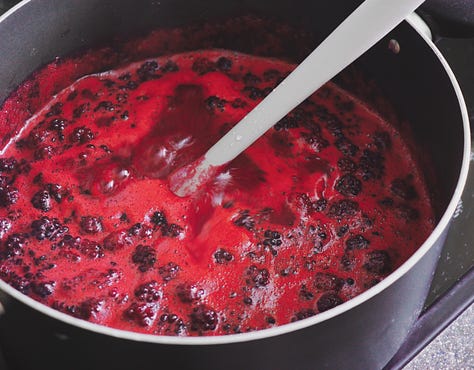
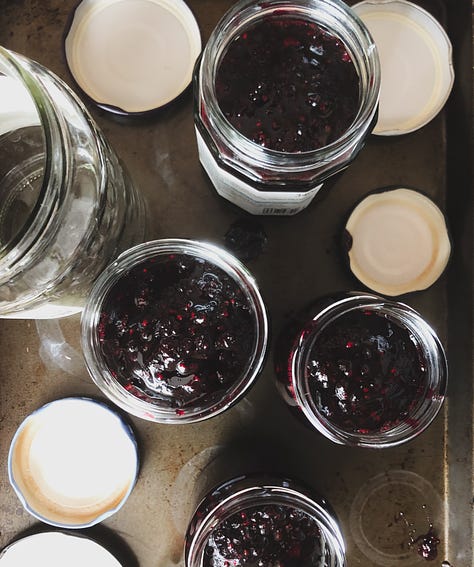
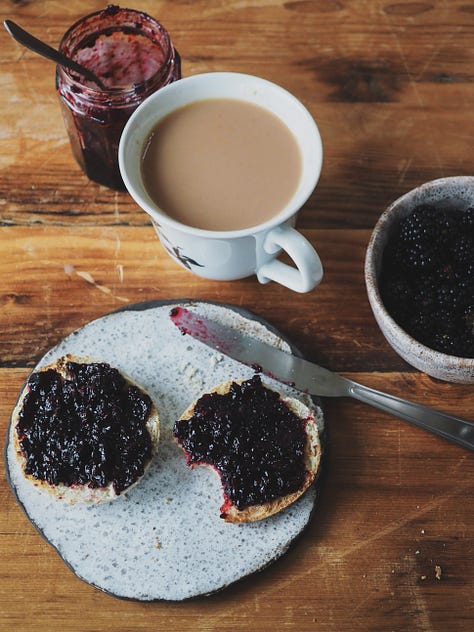





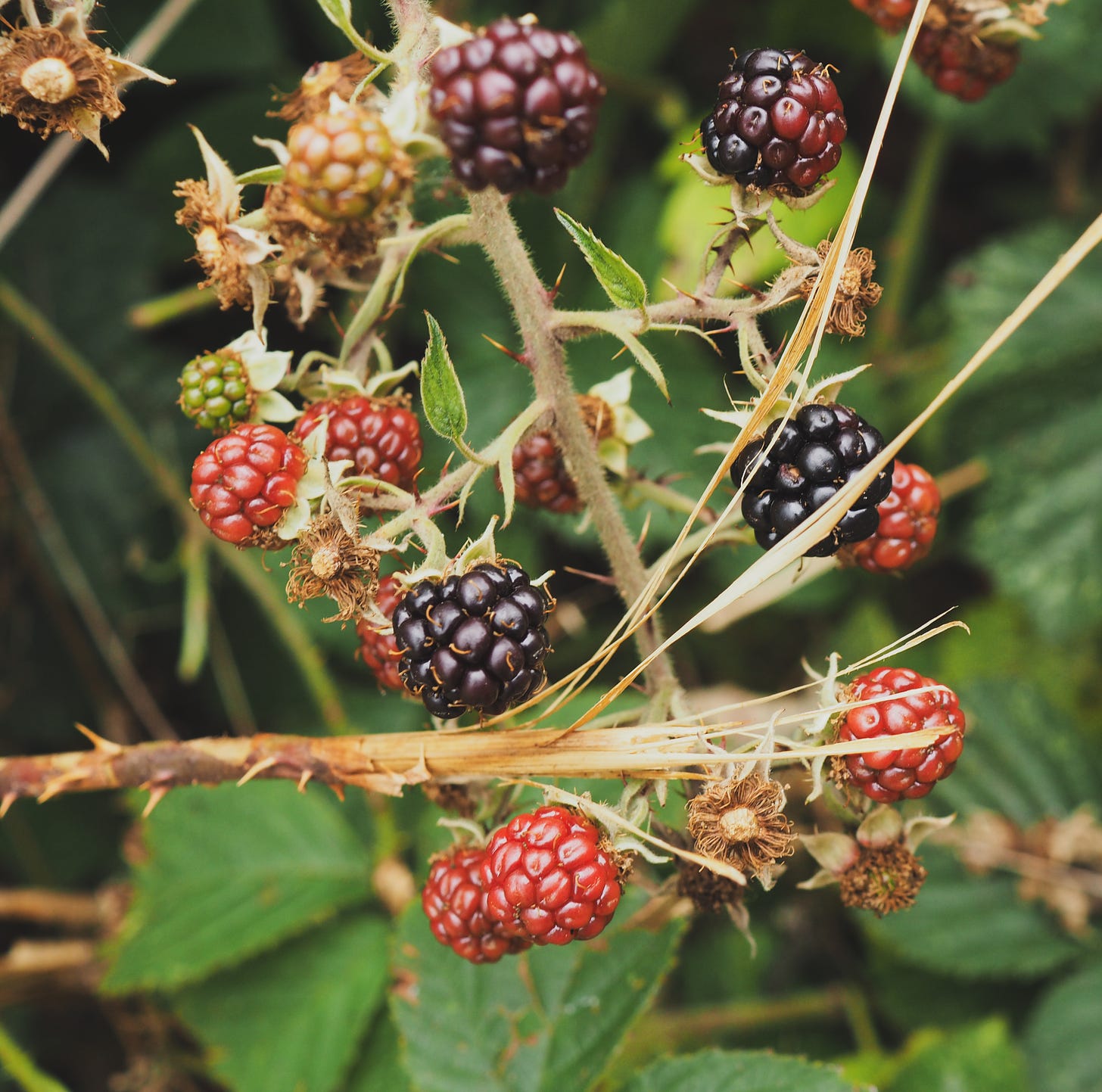


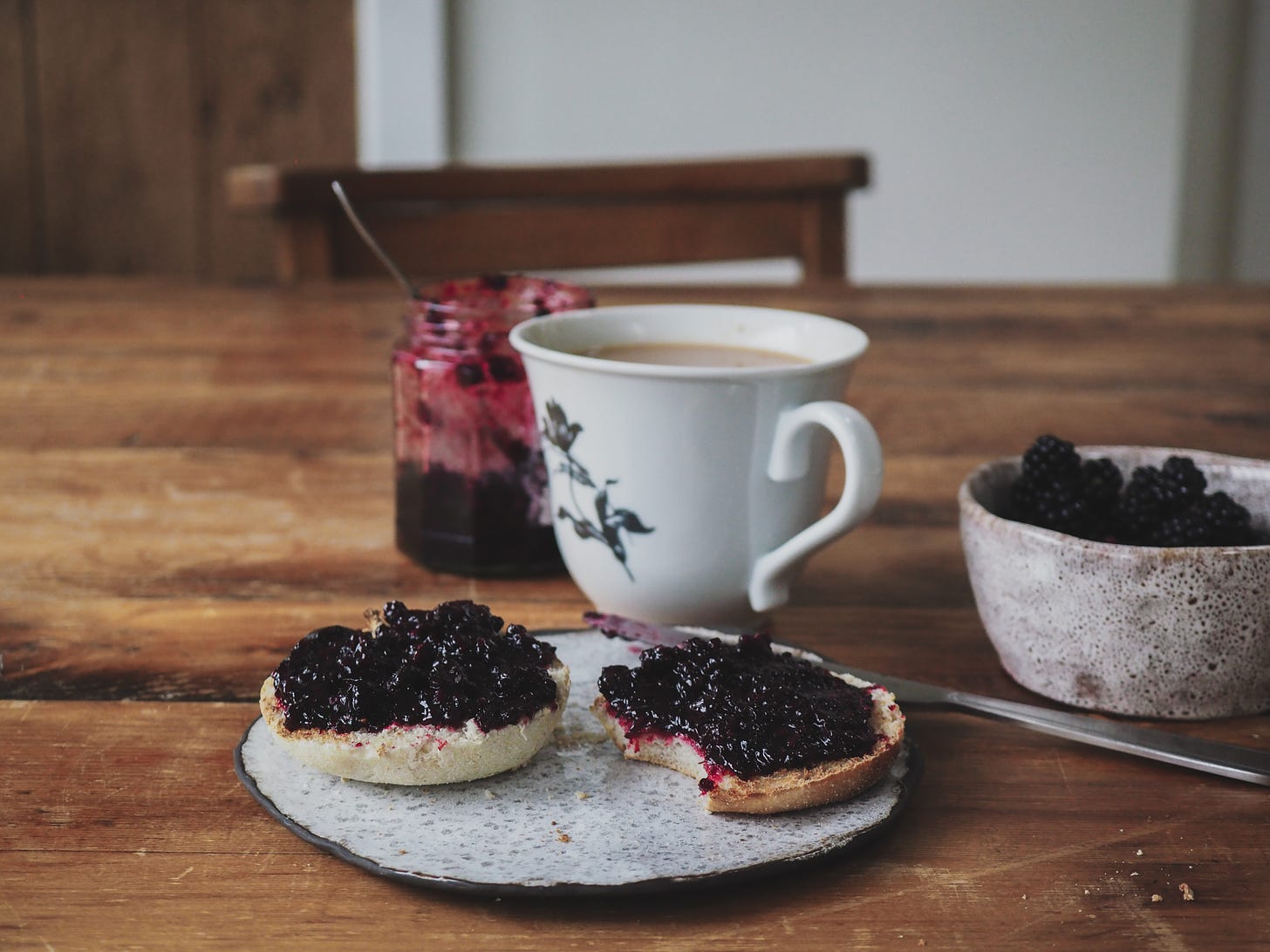
Your blackberry jam looks fantastic.
Just a note, though, from a retired apple-grower's daughter: that Cox will never fruit unless there is a pollinator tree nearby. If there's not one in the garden already, you need to plant a crab apple tree.